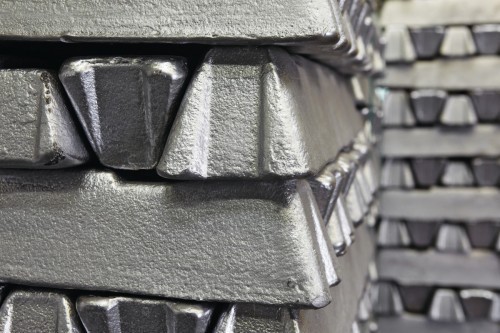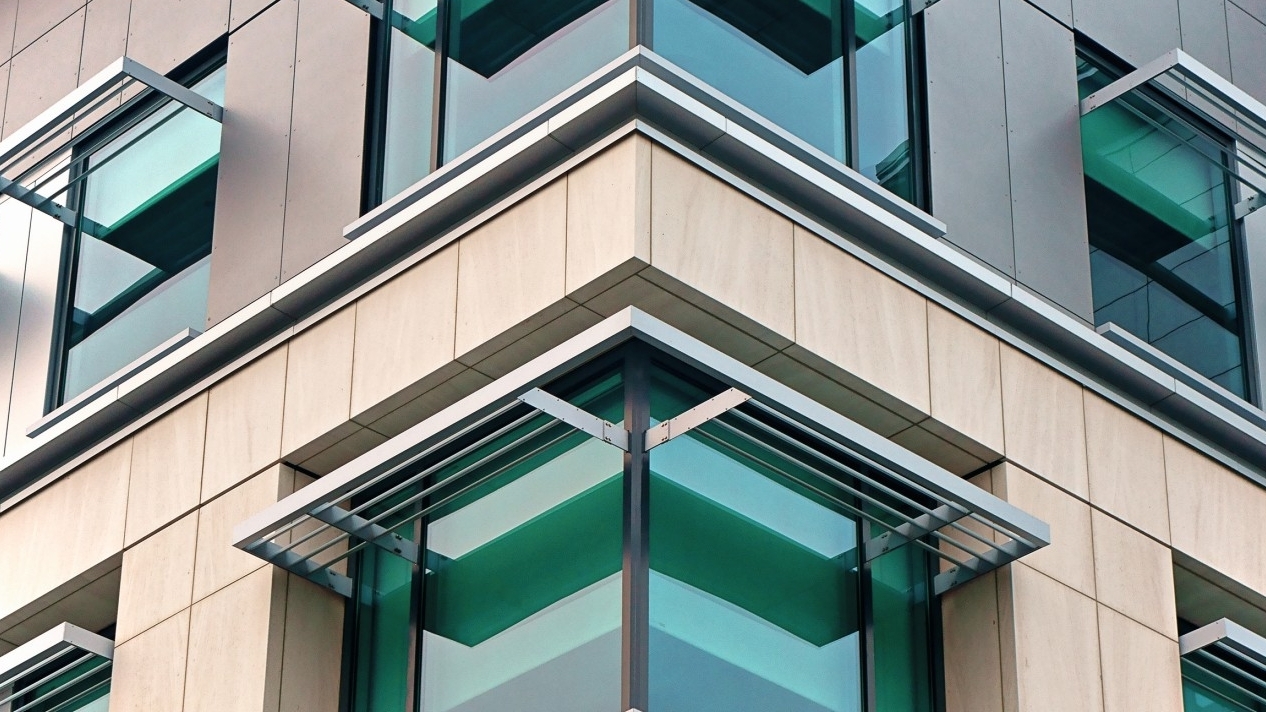Question: Galvanizing aluminium is not one of our core tasks, but we occasionally receive small and medium-sized orders. Now, compared to steel, pre-treatment is quite a costly and error-prone process. One of our venerable foremen, who has long since retired, pointed out to us - without giving details - the possibility of coating aluminum alloys directly. After all, stainless steels could also be electroplated directly without a conversion layer. Initial attempts at direct plating with nickel or copper showed terrible results. Chrome plating was also only successful in isolated cases.
Has anything changed in this area in recent years? Do you have any practical tips and further literature for us?
Answer: As nothing has changed electrochemically in aluminum and its alloys in recent years, there have been no revolutionary changes in terms of process technology.
The comparison with stainless steel is obvious
 The problem with electroplating aluminium is the compact oxide layer that forms on the surfaceTheproblem with aluminium is the rapid formation of a thin but very compact oxide layer. This is also known from high-alloy steels. However, zincate pickling is not selected for coating these steels. In most cases, the metal is treated with nickel-strike baths, in special cases with pre-gold.
The problem with electroplating aluminium is the compact oxide layer that forms on the surfaceTheproblem with aluminium is the rapid formation of a thin but very compact oxide layer. This is also known from high-alloy steels. However, zincate pickling is not selected for coating these steels. In most cases, the metal is treated with nickel-strike baths, in special cases with pre-gold.
One would therefore assume that it should also be possible to electroplate aluminium directly without taking the "detours" described above. The assumption is correct, but there are also reasons why this is the exception and not the rule.
Compared to the so-called stainless steels, aluminum alloys are very special. Companies that specialize in the electroplating of aluminium expect a wide range of these alloys. The corrosion behavior of these alloys can be very different. This has an effect, for example, on the behavior in the pickling baths and the subsequent galvanizability. In addition, high silicon contents, porous surfaces or simply a very unfavorable part geometry (keyword scattering) can make direct coating extremely difficult or even completely impossible.
However, there are aluminium alloys and components that are suitable for direct electroplating. However, this is not an all-purpose weapon. As these processes are rarely used, there is little information about them in the specialist literature.
Important: Direct electroplating as a term may cause some confusion. Proper pre-treatment is also necessary here. The term simply means that intermediate layers of zincate (or stannate) can be dispensed with, as can electroless nickel plating. After cleaning steps such as degreasing and pickling, the aluminium is electroplated directly.
Nickel strike and pre-gold simplify direct chrome plating considerably
Direct chrome plating is obvious if you know the central mechanism of nickel strike and pre-gold. Put simply, this involves a very strong hydrogen evolution at the cathode, which literally tears open the oxide layer and removes it with the formation of H2O. Cr(VI) electrolytes in particular seem to be ideal for this task, as they are actually - to put it bluntly - hydrogen electrolytes with the by-product of chromium deposition (the cathodic efficiency is 10-25 %, depending on the type of electrolyte).
This is further facilitated by the fact that cover current is used for electroplating. The covering current density must be slightly higher than the limiting current density for the reduction reaction of chromium(VI) to chromium(III).
Fluoride-containing electrolytes, as described in the lesson on chromium, are mainly used. Fluoride ions in the form of ammonium and chromium fluoride are added to an electrolyte for direct deposition on aluminum, which also allows current interruptions. The complex tantalum fluoride is used with sulphates and other complex fluorides for deposition on special materials such as aluminum-zinc alloys for custom chrome plating.
Typical approach
Chromium trioxide (CrO3): 300 g/L
Potassium hexafluorosilicate (K2SiF6): 1 g/L
Strontium sulphate (SrSO4): 4-5 g/L
Potassium fluorotitanate (K2TiF6): 0.4 g/L
Sulphuric acid (H2SO4): 2 g/L
Potassium heptafluorotantalate (K2TaF7): 0.3 g/L
Temperature: 50 °C
Current density: 40 A/dm2
Sodium ions are also often used in tertrachromate electrolytes. Sodium hydroxide, sodium hydrogen carbonate, sodium sulphate, sodium hydrogen sulphate, sodium fluoride and other compounds are used. The use of NaOH leads to the formation of tetrachromate (Na2Cr4O13) with a simultaneous increase in the pH value. As tetrachromate is only stable at temperatures up to 25 °C, tetrachromate electrolytes are cold working. 18 to 22 °C is optimal.
Reducing agents are also added to the tetrachromate electrolytes in order to set a certain chromium(III) concentration. With such electrolytes, the problems of direct deposition on zinc die casting, brass and aluminum can be reduced. Tetrachromate electrolytes are used in a wide current density range from 10 A/dm2 to 150 A/dm2 and allow current yields of up to 20-35 %. The deposited deposits are matt, soft and easy to polish.
In order to optimize direct chrome plating, special current forms and sometimes ultrasound are often used for support. In addition to the covering current, pulsating direct current is also used. Maintaining a pulse duration in which less than one atomic layer is deposited should also be suitable for depositing crack-free chrome coatings with good adhesion directly on aluminum. The times for the hydrogen to escape between the pulses should be between 0.5 ms and 2.5 ms. Gray impulse chromium coatings can be used as undercoats under NiCr coatings.
Alternating current superposition by rectification is another possibility that was introduced into electroplating technology as early as 1905. The structure of electrolytic metal deposits can be easily controlled with alternating current superposition. This also applies to chromium deposition. The structural change in chromium is essentially in the direction of matt deposits. Although crack-free layers and layers with improved adhesion to aluminum can also be deposited, alternating current superposition has not gained any significance.
True alternating current superposition using special circuits is another form of current. If an alternating current with an amplitude smaller than the direct current is superimposed on a direct current, the resulting current has no anodic components.
If an alternating current with an amplitude greater than the direct current is superimposed on a direct current, the resulting current has anodic components.
If, for example, aluminum is chromium-plated with asymmetrical current, the structure of the layers changes, as does the application of pulsed current, and with it the microhardness and appearance. The shiny layers with microhardnesses of 1100 daN/mm2 (1100 HV) produced by direct current deposition change to matt layers with a hardness of 650 daN/mm2 (650 HV) when alternating current is superimposed.
Direct nickel plating
Direct nickel plating baths for aluminum often work with the addition of fluoroborate:
Nickel sulphate: 200 g/L
Nickel fluoroborate: 66 g/L
Nickel chloride: 1 g/L
Boric acid: 20 g/L
Bath temperature: 60 °C
pH value: 1.0
The bath is prepared with distilled or deionized water and any excess chloride introduced by the nickel salts is precipitated with silver sulphate. The bath is sensitive to impurities; copper and other heavy metals are removed either by electrolysis at low current density or by precipitation with nickel filings. Copper rails in the immediate vicinity of the bath are appropriately nickel-plated. Nitrate impurities can also be destroyed by electrolysis at low current density. Organic impurities are removed by treatment with activated carbon.
Before electroplating, the parts are degreased and cleaned in a solution of 3% trisodium phosphate and sodium carbonate at 60 °C for two minutes. Adhering sludge is removed in diluted sulphuric acid or by brushing.
In the nickel bath, the parts are first covered at 3 to 4 A/dm2 for about one minute, after which the current density is reduced. Good coatings are deposited on commercial aluminum, the alloys AlMg3, AlMgSi, AlZnMgCu and on an alloy containing 13 % silicon. Adhesive strengths of 280 to 350 N/mm2 are obtained. Heating to 500 °C for 10 minutes and subsequent quenching creates a diffusion layer of Ni2Al3, which increases the adhesive strength to at least 700 N/mm2.
A Russian recipe for direct nickel plating has the following composition:
Nickel sulphate: 150-250 g/L
Boric acid: 23-30 g/L
Sodium fluoride: 2-3 g/L
Sodium chloride: 1-2 g/L
Potassium persulphate: 1-2 g/L
pH value: 4-5
Temperature: 50-60 °C
Current density: 1-2 A/dm2
Direct copper plating
A process for direct copper plating of aluminum from a bath of the following composition is known:
Ammonium pyrophosphate: 100 g/L
Oxalic acid (crystall.): 60 g/L
Copper oxide: 20 g/L
Triethylamine: 50 g/L
Initial pH: 5.6-5.8
Copper pyrophosphate can also be used. The parts are degreased, cleaned in a solution of 3 % trisodium phosphate and 3 % soda at 65 °C, rinsed and placed in the bath. The current is switched on one to two minutes after insertion. With 2.5 to 3 A/dm2 at 60 °C with cathode movement (3.5 cm/s), coatings up to 12.5 µm thick can be produced, which adhere well to the substrate. The movement of the electrolyte is essential to achieve satisfactory adhesion.
Excessive expansion of the cleaning process should be avoided. It seems strange that the adhesion of subsequently applied coatings is improved if the copper-plated parts are immersed in boiling water for 20 to 30 minutes before they are placed in the normal copper or nickel bath. The effect may be related to the storage of hydrogen at the aluminum-copper phase boundary.
The following electrolyte is suggested for depositing a thin copper coating on aluminum:
Copper cyanide: 40 g/L
Sodium cyanide: 48 g/L
Sodium carbonate: 30 g/L
Potassium sodium tartrate: 60 g/L
Temperature: 40-50 °C
pH value: 10-10.5
The electrical contact must be established before the cleaned workpieces are immersed in the bath. Initially work with 2.4 A/dm2, after one to two minutes the current density is reduced to 1.2 A/dm2 and electrolyzed for a further 3 minutes. The pH value must be carefully controlled to avoid the formation of bubbles.
Conclusion
There are certainly ways to electroplate aluminium directly. Whether this is significantly easier and less prone to errors than zincate treatment is doubtful. The most practicable option is chrome plating, although this also has its risks with certain types of current. Apart from that, there are simpler tasks in electroplating technology than electroplating on chrome if it is to serve as an intermediate layer. In addition, of course, there is the fact that we actually want to move away from chromium trioxide. Nevertheless, a few preliminary tests with the proposed electrolytes could be worthwhile.
Further information
On our Galvanotechnik for You platform, there is a very comprehensive online course on the subject of electroplating aluminium. This course covers both the theoretical basics and the pitfalls of electroplating in practice. The focus is on conveying an understanding of the material, processing, coating and possible errors. In addition to pre-treatment and general plating techniques, several electrolytes are also covered in depth. This includes numerous recipes and practical information that go beyond pure aluminium electroplating. This also makes this course an excellent reference book.
URL to the course:
https:// www.galvanotechnik-for-you.de/uebersicht-kurse/galvanisierung-von-aluminium/


